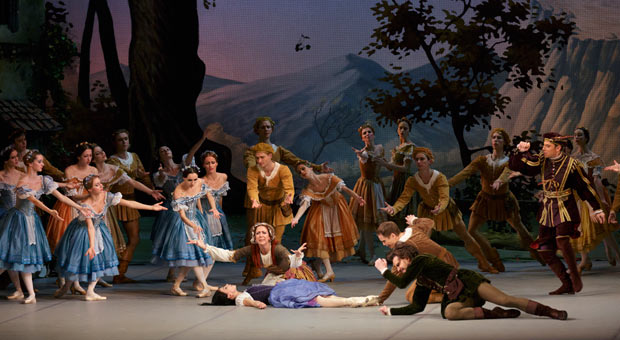
© Paul Kolnik. (Click image for larger version)
Mikhailovsky Ballet
Giselle
New York, David H. Koch Theater
11 and 12 (mat) November 2014
www.mikhailovsky.ru
www.davidhkochtheater.com
Russian Season
Relations with Russia may be at their lowest ebb since the end of the Cold War, but New York seems to be in the midst of a Russian dance boom. The Bolshoi was here this summer, and the Mariinsky comes to BAM (Brooklyn Academy of Music) early next year. As we speak, the Mikhailovsky Ballet, St. Petersburg’s second company, is in residence at the Koch. The troupe, newly resurgent under the management of a fruit baron, is having its first American season. (It is traveling with its own small orchestra.) A tour planned back in 2012 was thwarted by the conflicting schedules of two of its stars, Natalia Osipova and Ivan Vasiliev, who, at the time, were also dancing just across the plaza, with American Ballet Theatre. ABT put its foot down and the Mikhailovsky retreated, but not for long.
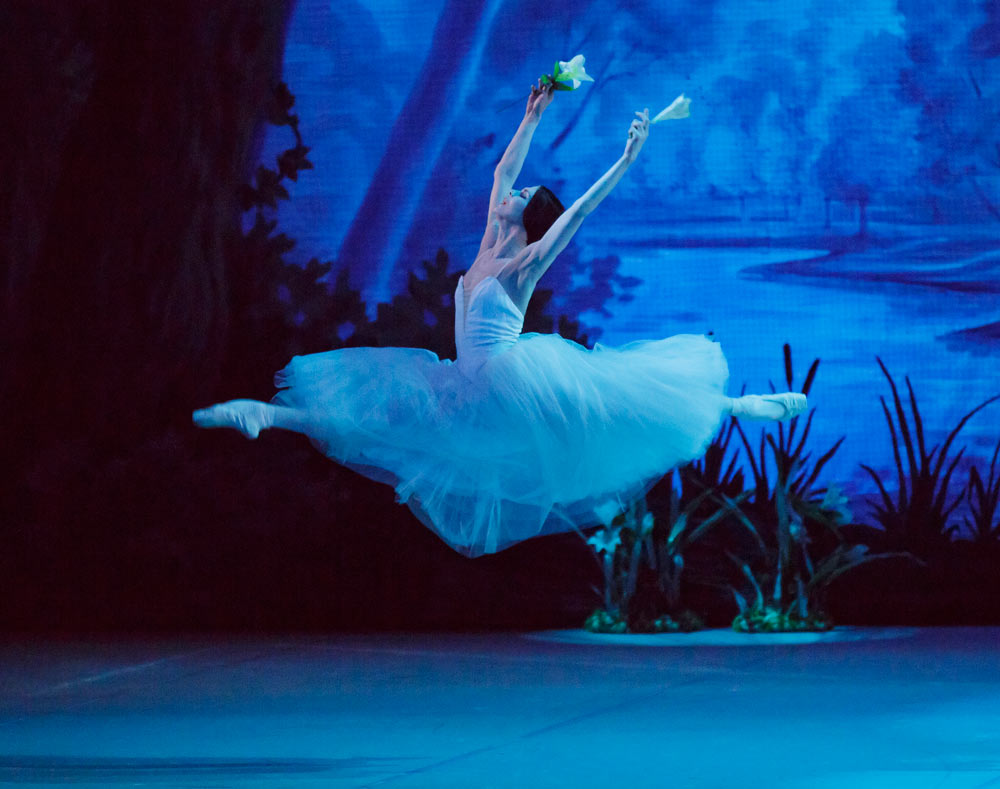
© Paul Kolnik. (Click image for larger version)
Beyond the bounty brought by the fruit baron and his wealthy friends, the key to the company’s recent rise has been the dedication of its ballet-master, Mikhail Messerer, scion of one of Russia’s most important ballet families. (His uncle was the virtuoso Asaf Messerer; his cousin is Maya Plisetskaya.) A longtime Bolshoi dancer, Messerer defected in 1980, only to become a highly respected teacher in England and abroad. His influence on the company is clear. The most remarkable thing is that the company looks neither like the Bolshoi nor like the Mariinsky. It has its own style.
The troupe opened its two-week run with the nineteenth century Romantic ballet, Giselle. The Mikhailovsky dances it cleanly, musically and warmly, exuding a tasteful, even modest, stage presence. There are no extravagant tempi or extremes of emotion in the pit, no exaggerations in the dancers’ line or demeanor. (Pavel Klinichev conducted.) The dancers’ technique is impeccable; clean landings and crisp footwork are particularly noticeable, across the board. And, unlike what we have come to expect from Russian troupes, the management seems to frown upon long pauses for applause and elaborate curtain calls. On the evidence of this first encounter, the Mikhailovsky comes across as a lovely, scrupulous, though not always terribly vibrant company. Emotions are understated; interactions slightly formal. We’ll see how this impression evolves over the course of the next two weeks, particularly after seeing the dancers in more home-grown fare, such as Messerer’s revival of the early Soviet work Flames of Paris (Nov. 14-16).
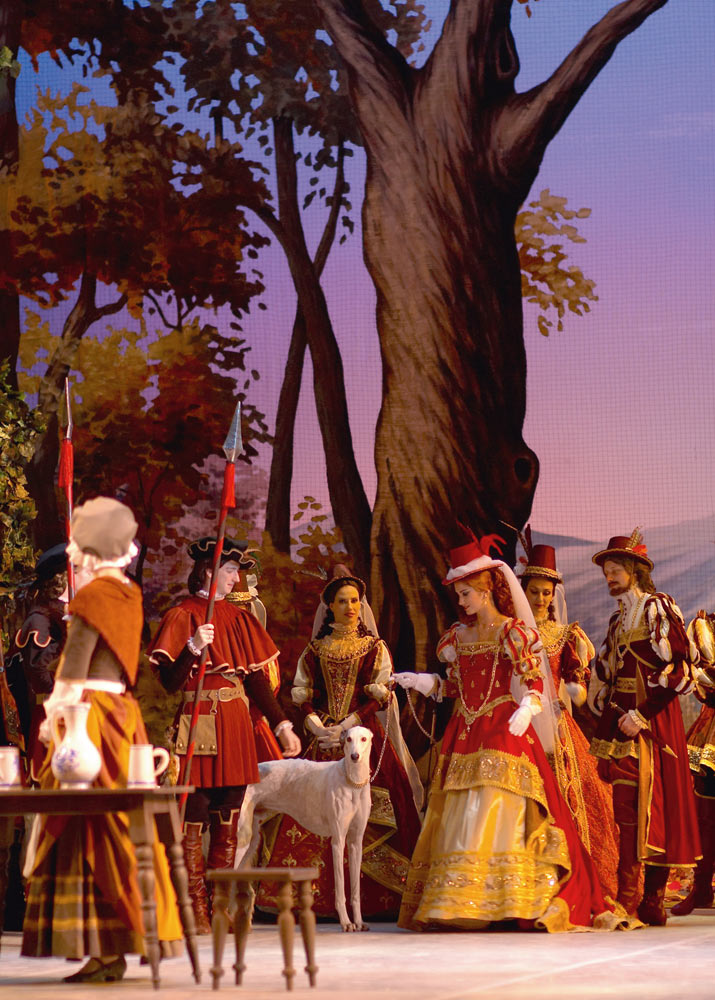
© Nikolay Krusser. (Click image for larger version)
To be fair, it would be difficult for almost any company not to be overshadowed by the presence of Natalia Osipova, the Mikhailovsky’s guest star, who led the cast on opening night. (She will dance in alternating casts in three of the company’s four programs at the Koch.) Osipova’s vitality is astonishing: the minute she stepped onstage, it’s as if the whole world became a few shades brighter. In fact, her main challenge, particularly in a ballet like Giselle, is finding a way to channel that physical exuberance and keep it within the bounds of the story. Like all stage animals, she looks a bit as if she were making it all up as she goes along. She polishes off the technical difficulties with no visible effort at all, and even adds a few, as when she pulls her legs up beneath her in a diagonal of assembles, making her look like she’s hovering in the air. Her spins are a blur. Her mad scene is memorable in that she forgets to look pretty as her mind unravels; she just stands there with her feet turned in and her belly out like an orphan. In the second act, she’s neither delicate nor ghostly, but she’s terrifyingly driven. She looks as if death had given her a whole extra set of superpowers. Albrecht need not worry. He’s in good hands.
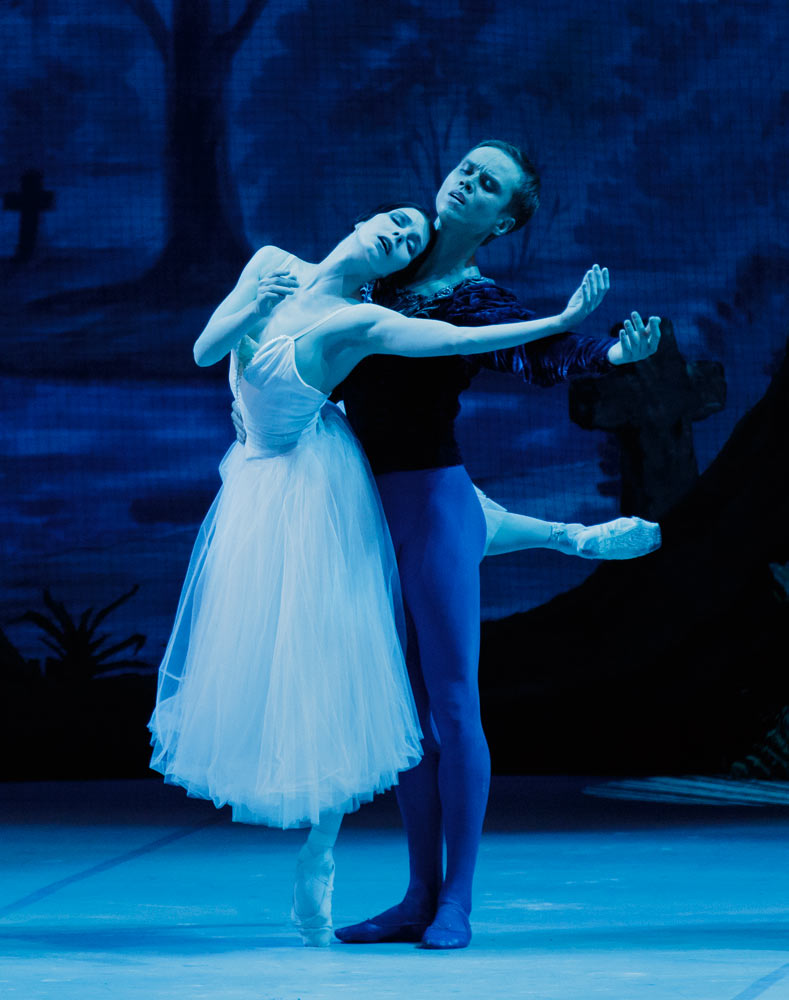
© Paul Kolnik. (Click image for larger version)
Which means that she needs a partner who can keep up with her, emotionally and physically, someone who can at least give the impression that he’s reacting spontaneously to her efforts on his behalf. Which, alas, was not the case with Leonid Sarafanov, a brilliant technician with a gentle stage-presence and a somewhat conventional take on the character of Count Albrecht. (Victor Lebedev, at the matinee on Nov. 12, was even more detached, but he did an extra set of beaten jumps in the second act to make up for it.) Sarafanov’s account of the choreography was among the finest I’ve seen, with impeccable landings and flawless lines, but he seemed constantly in danger of fading into the scenery. Both Hilarions – Vladimir Tsal and Andrey Kasyanenko – were far more touching. Western companies tend to play Hilarion as a thug; in this version he’s loving, protective. He makes Albrecht look like a milquetoast, hardly worth the trouble.
The Mikhailovsky’s Giselle was staged by the well-loved Soviet Romantic dancer, Nikita Dolgushin. It is detailed and pleasing; the dances for the vignerons are particularly lively, adding claps to the usual buoyant steps. (Are the tambourines too much? Perhaps.) It also has a fair amount of mime, though Giselle’s mother’s warning to her daughter about what awaits her should she die before wedlock is cut down to almost nothing. It’s a pity – this gestural ghost story is always a highlight of the first act. The designs are attractively autumnal, along the lines of many other Giselles. In the second act, instead of a church we see a flowing stream in the background. A few graves sit forlornly in the moonlight. Branches and vines rise and fall, half concealing the character’s entrances. The device doesn’t quite work: we can see Giselle fixing her skirt before she materializes. My favorite effect, though, is the most old-fashioned of all, when she is lowered from a tree on some sort of mechanical arm, showering her prince with lilies. It’s like a nineteenth century print come to life.

© Jack Devant. (Click image for larger version)
In fact, the entire second act is bathed in old-fashioned atmosphere. The Wilis are delicate, sylph-like, hardly the man-killing predators we have become used to. The human wave with which they dispatch Hilarion is accomplished with only the shoulders and head, not the whole torso. Their hops across the stage in arabesque are dainty – and a little after the beat – rather than relentless. This approach worked better at the matinée, with a less vigorous Giselle. Anastasia Soboleva, a dark-haired beauty with liquid eyes and impossibly long limbs (and neck), fit beautifully into this poetic frame. In the first act, she was soft and over-trusting, in the vein of Carla Fracci, but here she took on an unearthly quality, as if her body were being moved by a frigid wind. Her arms had a life of their own, like tendrils bathed in moonbeams. She is a young dancer in the company, a first soloist lured over from the Bolshoi. Clearly, she’s blossoming in Messerer’s care. Next week, she’ll be performing in Le Halte de Cavalerie (Nov. 19) and Class Concert (Nov. 18 and 19). Try to see her.













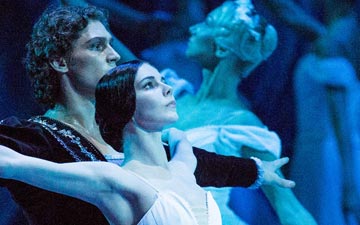
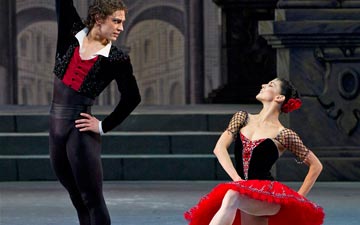
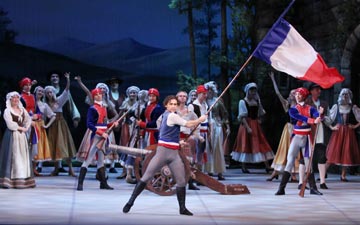

You must be logged in to post a comment.